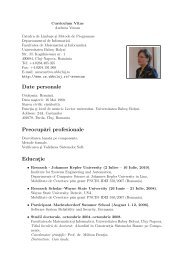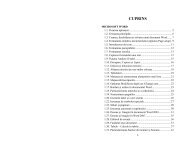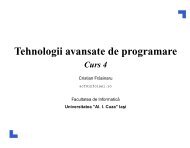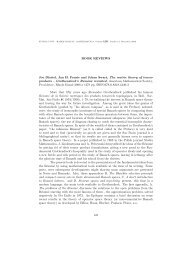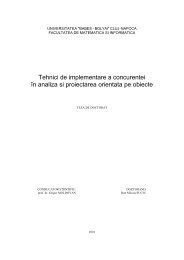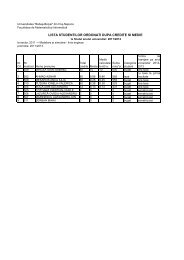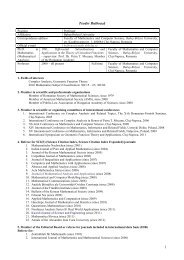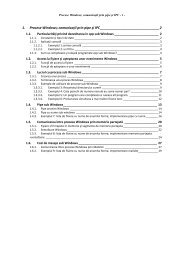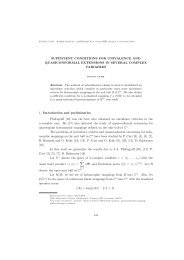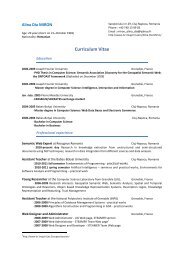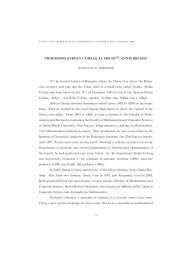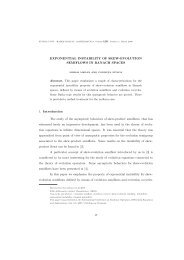CONTENTS
CONTENTS
CONTENTS
You also want an ePaper? Increase the reach of your titles
YUMPU automatically turns print PDFs into web optimized ePapers that Google loves.
236 ANCA VASILESCU (1)<br />
for the normal value and one for the complement value of the bit stored in it. A flipflop<br />
maintains a binary state until it is directed by a clock pulse to change that state.<br />
At the different levels of detailing, the theoretical flip-flop might be asynchronous,<br />
but the synchronous models are widely used in practice.<br />
2.2. Process algebra SCCS. The process algebra SCCS, namely Synchronous Calculus<br />
of Communicating Systems is derived from CCS [3, 4] especially for achieving<br />
the synchronous interaction in the framework of modelling the concurrent communicating<br />
processes. The operational semantics for SCCS is given via inference rules<br />
that define the transition available to SCSS processes. Combining the product and<br />
the restriction, SCCS calculus defines the synchronous interaction as a multi-way<br />
synchronization among processes.<br />
A formal approach such as the process algebra SCCS supports a way to relate<br />
two different specifications in order to show that those specifications actually describe<br />
equivalent concurrent systems, for some specific meaning of equivalence. For each of<br />
the circuits we are interested in, we define a specification Spec which is based on<br />
the definition of the circuit and a specification Impl which is based on the behaviour<br />
and/or the properties of that given circuit. As demonstration technique, we start<br />
with these two specifications Spec and Impl and then we apply a set of SCCS-based<br />
algebraic laws in order to formally prove that the low-level specification, Impl, is<br />
correct with respect to the higher-level one, Spec. This correctness proof is based on<br />
the bisimulation congruence, the appropriate equivalence in the theory of concurrent<br />
communicating processes.<br />
3. Algebraic model for the synchronous SR flip-flop behaviour<br />
In this section we define both specification and implementation agents for asynchronous<br />
SR flip-flops and synchronous SR flip-flops. The core of our results consists<br />
in proving, both formally and automatically, the involved agents bisimilarities.<br />
3.1. The case of asynchronous SR flip-flop. The specification Spec for the SR<br />
flip-flop behaviour might be [3]<br />
(1) SpecSR(m, n) = <br />
(σiρjγ mδn : SpecSR(k, l))<br />
i,j∈{0,1}<br />
where the values k and l are defined by k = i NOR n and l = j NOR m.<br />
In order to achieve the composition and to assure the fork of the output signal, we<br />
have to define two morphisms to make two appropriately relabelled copies of the NOR<br />
gate. We also define the set E of external actions, E = {σi, ρi, γi, δi|i ∈ {0, 1}}, in<br />
order to form the SCCS product between the two communicating NOR gate-agents.<br />
The SCCS implementation for the SR flip-flop behaviour might be<br />
(2) ImpSR(m, n) = (NOR(m)[Φ] x NOR(n)[Ψ]) ↾ E<br />
The relation SpecSR(m, n) ∼ ImpSR(m, n) is established.



